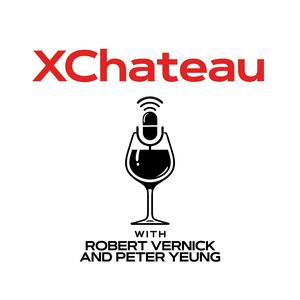Flexibility, not Sobriety w/ Maggie & Rodolphe Frerejean-Taittinger, French Bloom
Pairing their need for a complex substitute for wine, for both pregnancy and professional network, Maggie Frerejean-Taittinger and friend Constance Jablonski enlisted Maggie’s husband, Champagne and Cognac winemaker Rodolphe to found French Bloom. With four years of R&D prior to launch and constant refinement since, French Bloom aims to redefine the alcohol free premium sparkling wine space. Maggie & Rodolphe delve into the creation of French Bloom, exploring its core markets, target customers, and the factors that have drawn them in. Detailed Show Notes: French Bloom overview500k bottles (2024)Created a premium NA sparkling categoryFocused on sparkling to create complexity, can play with layersLVMH minority investor4 years of R&D to get the desired qualityDe-alc process loses 60% aroma (was 90% in 2021), removes the backbone of the wineBuilt NA wine like Cognac, needs an undrinkable base wineFocused on the South of France (warmer, higher alcohol and body) for stronger wines, more body, Languedoc (more organic 40% vs 3-4% in Champagne)Limoux is the best place for NA sparkling, 300m high, Chardonnay and Pinot Noir, a temple of natural wineBase wine is a bit oxidative, very acidified (used to add lemon juice, now naturally from wine), oaky (new oak, foudre), no sulfites, more tanninCreate blends of different reserve winesExtra Brut (0% abv, 0 sugar) has a base of 30% reserve wine from 2 years, aged in new oak barrels to give more structureBetter to make adjustments before de-alc vs afterUse voile to protect wine from oxidation (like Jura)Flash pasteurization is used b/c no abv, sulfites to protect the wineNA marketWine, beer, spirits - $10B (2020), $20B (2025), believes $30B (2030)Premium NA sparkling - $0.5B (2025), could double next 5 yearsHoly grail is quality NA still wine, not there yetBest distributors are wine / Champagne distributors, Thailand/Belgium have NA-focused distributorsFrench Bloom customersBiggest markets are Champagne markets (France, US #2, UK, Japan, Australia, Belgium, Germany)Younger (25-45), skew female, appreciates both alc and NA sparkling wineSells 20% DTC globally2024 NielsenIQ study on NA purchase behavior - #1 driver - for conscious hosting (aligns w/ French Bloom’s ethos of not excluding anybody); #2 health & wellness; #3 drivingMarketing is digital first, leveraging Constance as a tastemaker and key opinion leaderMore partnerships - Coachella, French Open, just signed F1 (10-year partnership, 1st ever official NA sparkling wine, Moet Chandon on podium; F1 new fans are 75% female, 50% Gen Z from Netflix series)Most effective marketing has been the founding story and authentic storytelling (i.e., Maggie’s pregnancy, Constance’s need for moderation while networking)Marketing through top-tier restaurants, hotels, and shops (e.g., Michelin-starred; became the #1 wine sold at Erewhon in 1 week)Michelin-starred restaurants have 50% non-drinkers at lunch, 20% at dinnerNo sugar, no additives, organic messaging plays well in California, less on the East CoastUses the term “alcohol free” vs. “non-alcoholic”NA trends around NA wine & food pairing, including “moderate pairing” (wine & NA wine/drinks as part of pairing); mirrored cocktails (3 versions ofthe same cocktail - NA, low, full) Hosted on Acast. See acast.com/privacy for more information.


